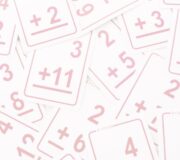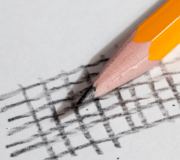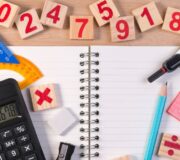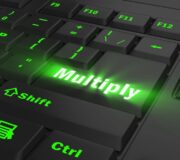The Best Free Multiplication Games To Play At Elementary School
Multiplication games are a great way to help children practice key multiplication skills. While multiplication is first taught in 3rd grade, students learn skills that assist with multiplication throughout the entire elementary school math curriculum, right from 1st grade (doubling, and counting in 2s, 5s and 10s) up to 5th Grade (4- by 2-digit long multiplication). A key part of the multiplication content in elementary school is learning times tables – children are required to know all their tables up to 12×12 by the end of 4th Grade.
In this article, we’ve compiled a list of twelve fun multiplication games to support the development of these key skills. Most require no equipment at all, and the rest use items that can easily be sourced in any school.
How to use these multiplication games
Put ‘multiplication games’ into a search engine and the results will most likely be a plethora of online games. All of the games suggested below don’t require a computer or internet connection at all – just good old-fashioned fun! Some can be played as a whole class, some in multiplayer small groups and some in pairs.
When to use multiplication games
Multiplication games and times tables games are great as math starters, or ‘warm-ups’. They could also be used to wrap up a lesson (perhaps even as an incentive – “if you work hard enough this lesson we can play XYZ at the end”).
Fun games like these are also great for those spare 5 or 10 minutes we sometimes have before lunch, at the end of the day, or even in the middle of a lesson if you feel like the children – or even you – need a ‘brain break’!
What are the benefits of multiplication games?
A lot of the multiplication content in the curriculum – especially from 1st to 3rd Grade – is about counting in multiples, repeated addition and multiplication tables, which can all get rather repetitive. Each of these educational games is a slightly more fun way of encouraging children to practice their multiplication skills.
For more multiplication resources take a look at:
Multiplication games are especially great for those children who struggle with math. Without a pen, pencil, multiplication worksheets or formal questions, and feeling as though they aren’t going ‘traditional’ math at all, students can be learning multiplication skills in a low risk environment.
Multiplication games – Lower Elementary
1st Grade multiplication games
Game: Who’s missing? Can children identify the missing multiple?
What you need: 10 mini whiteboards
How to play:
- Ask 10 children to stand at the front and write the first 10 multiples of either 2, 5 or 10 on their boards. Let’s use 2 as an example here, so each board would have every multiple of 2 from 2 – 20 written on it
- Have the rest of the class close their eyes and ask one of the children at the front to step out the line – ask the rest of the children to shuffle up and close the gap
- Ask the class to open their eyes – whoever can work out the multiple that’s missing can come and replace the missing child!
Make it easier:
- Only use 5 children at the front (for the first 5 multiples of 2, 5 or 10)
- When one of the children steps out of line, keep the gap there so it’s clearer which multiple is missing
- Give children a number line (or ‘help sheet’ of some sort) to help them count the multiples
Make it harder:
- As well as asking a child to step out of line, ask the rest of the children at the front to mix up so the multiples aren’t in order any more
Game: Messy doubling!
What you need: small pieces of paper (A6 or A5) folded in half; paint
How to play:
- Show the children the pre-folded piece of paper under a document camera (if no document camera is available, do this with a larger piece of paper)
- Ask the children to pick a number from 1-10 and choose one child to use the paint to mark that many blobs of paint/fingerprints on one side of the paper (make sure the paint is very wet! They could use a paintbrush if you’d prefer)
- Encourage the children to arrange these numbers as arrays if possible – you could model this first
- Fold the piece of paper so that the wet fingerprints will print on the other half of the paper. Before unfolding, ask the class to tell you how many blobs of paint will be on the piece of paper now (what is the original number doubled?)
- Unfold the piece of paper to reveal the answer – whoever got it correct before the reveal can do the fingerprints for the next amount!
Make it easier:
- Only use the numbers 1-10
- Give the children concrete materials to help them work out what the number will be double
Make it harder:
- Use numbers larger than 10
- Work backwards – show the children the piece of paper already doubled/printed and ask them what the original number would have been
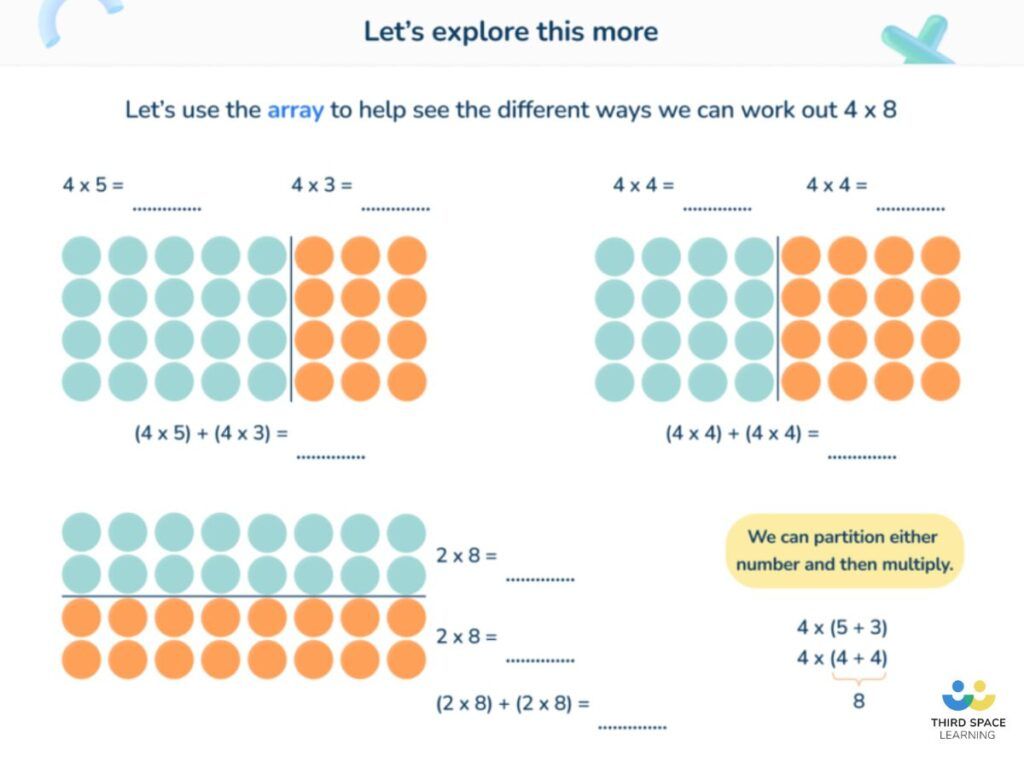
2nd Grade multiplication games
Game: Trading tables
What you need: Post-it notes
How to play:
- Write multiplication questions (based on the 2s, 5s, or 10s) on some Post-it notes and stick them on each child’s forehead! (or t-shirt, or ask them to hold it)
- Ask the children to move around the classroom and answer the question on someone else’s forehead – once they’ve answered it correctly, they swap Post-its and continue to circulate to answer someone else’s question
Make it easier:
- Children can work in pairs and ‘share’ a Post-it note
Make it harder:
- Write some extension questions or word problems including multiplication problems on each Post-it (it could be marked with a star) – challenge children to answer both questions before moving on (you could put the answers on the back of the Post-it)
Game: Throwing tables! Practicing multiplication facts
What you need: inflatable or foam ball
How to play:
- Write the numbers 1-12 evenly around the ball in a thick black marker pen
- Ask the children to stand up and spread out around the room (or stand in a circle)
- Throw the ball to a child – whichever number their right thumb lands on, or is nearest to, they have to skip count by 2, 3, 5 or 10 (whichever number you are working on)
- Then throw the ball on to someone else
Make it easier:
- Write the numbers 1-5 in blue (or any different color to black) and make sure they’re mixed out evenly around the numbers 6-12 on the ball. Ask the children to look for the nearest blue number and skip count that one instead
Make it harder:
- Set a time limit for responses to improve fluency and speed (read about our other mental math games here!)
- Include numbers higher than 12 on the ball in green (or any different color to black) and ask children to look for the nearest green number instead to use for the multiplication
Read our article on math games lower elementary for even more ideas to bring math to life in your lower elementary classroom.
Multiplication games – Upper Elementary
3rd Grade multiplication games
Game: Around the World
What you need: nothing!
How to play:
- Children sit in their seats in the classroom. Have a child stand behind someone’s seat so these 2 children – let’s call them A (standing child) and B (seated child) – are in the game at a time
- Ask A and B a multiplication question (by the end of 2nd grade, students have learned to skip count by all numbers except 6, 7, 9 and 12) – the first person to get it correct wins and ‘moves on’ to the next person (if it were A, they would stand behind the next child’s seat; if it were B, they would get up to stand behind the next child’s seat and A would replace B in their seat)
- You could have two pairs going on at the same time – A and B on one side of the room, C and D on the other side of the room. Ask each pair one question at a time and the winner continues to ‘move on’ until all children have had a turn
- If only one pair is playing at once, wait until all children have had a turn – the final person standing is the winner. This could mean that one child has defeated everyone, or that the child in the very last pair to play gave the correct answer and happens to be the overall winner just from getting one correct answer!
- If two pairs are playing at once (A and B, C and D), once all children have a turn, have the two remaining children standing face off with each other to get the ultimate winner!
- You can differentiate the questions as you go depending on which two children are playing at the time
Make it easier:
- Ask simpler multiplication questions
- Give think time (e.g. you can’t answer until I count down from 3)
Make it harder:
- Set a time limit for a response (e.g. you’re both out if nobody has answered after 2 seconds)
Game: Rock, Paper, Scissors, Multiply!
What you need: nothing!
How to play:
- In pairs, each child shakes one fists three times (“rock, paper, scissors”) before holding out a number from 1-5
- The first person to multiply both numbers together wins a point!
Make it easier:
- One person always has to hold up a 2 (just to practice the 2 times table) or a 5 (just to practice the 5 times table)
Make it harder:
- Add in the option to hold up zero
- Use both hands to show numbers up to 10
4th grade multiplication games
Game: Shout it out! How quickly can you recall your times tables?
What you need: A pack of cards
How to play:
- Remove the Kings and Jokers from a pack of cards. Ace = 1, Jack = 11, Queen = 12 and all the other numbers are themselves
- In pairs, split the pack in half and give each partner half each
- Each partner draws a card and lays it on the table simultaneously – the children must multiply both numbers together
- The first person to give the correct answer keeps both cards
- If it’s a draw (correct answer said at the same time), children keep one card each
- The person with the most cards at the ends wins
Make it easier:
- Remove as many cards as necessary, e.g. all picture cards (except the Aces) to just practice 1-10 tables, etc.
- Children draw the cards one at a time (so they can get their head round which ‘times table’ they will be working in once the first card is drawn)
Make it harder:
- Add in Kings in to represent 13 – children should be able to work this out by adding one more multiple of the times table
- Add in the Jokers to represent 0 – children often get caught out when multiplying by 0!
- Keep one card down at all times – when the children draw their two cards, they have to multiply all 3 numbers together instead (the two they’ve drawn plus the one in the middle)
Game: Splat! How quickly can you identify a multiple of a times table?
What you need: nothing!
How to play:
- Two children stand back-to-back with a hand on top of their head
- A 3rd person (the teacher or another child) sets the multiple for the game – let’s use 7 as an example
- The 3rd person calls out numbers – but not multiples of the given number. For each number that isn’t a multiple of the given number, the children take a step forward, further away from each other. For example, with 7 as our example: “13… (step)… 25… (step…) 19… (step)”
- At some point, the 3rd person calls out a multiple of the given number – when the two children recognise this as a number in the times table, they have to turn around, raise their hand and shout ‘Splat!’. For example, “13… (step)… 25… (step…) 19… (step)… 21 – Splat!”
- The first person to ‘splat’ their partner wins!
Make it easier:
- Make the given number an easier times table (e.g. 5 or 10)
- Give the children a set amount of thinking time (e.g. 2 seconds) before they’re allowed to step forward or ‘splat’
Make it harder:
- Set two numbers as the multiples, e.g. 7 and 6. The children must then listen out to multiples of both numbers
- Give a different instruction for a different multiple. For example, they must ‘splat’ for a multiple of 7, step forward for a non-multiple of 7 but stand still for a multiple of 5
Game: Fizz Buzz (an old classic!) Can you replace multiples of a number with a word?
What you need: nothing!
How to play:
- Ask the children to stand in a circle (minimum groups of 6, maximum the whole class!)
- Choose 2 numbers to be the multiples of this game. One will be ‘fizz’ and one will be ‘buzz’ – 3 and 5 work well for this, so we’ll use 3 as ‘fizz’ and 5 as ‘buzz’
- Start with just the 3s – count round the circle, each child saying a number, but when it gets to a multiple of 3, that child must say ‘fizz’ instead. For example, “1, 2, fizz, 4, 5, fizz, 7, 8, fizz, 10, 11, fizz…” etc. If someone says the number instead of the word, they’re out!
- Now practice with the 5s – count round the circle again but when it gets to a multiple of 5, that child must say ‘buzz’ instead. For example, “1, 2, 3, 4, buzz, 6, 7, 8, 9, buzz, 11, 12, 13, 14, buzz…” etc. Again, if someone says the number instead of the word, they’re out!
- It gets tricky as we’re going to combine the two – if a number is both a multiple of 3 and 5 (a common multiple), the child must say ‘fizz-buzz’! So it should sound like this… “1, 2, fizz, 4, buzz, fizz, 7, 8, fizz, buzz, 11, fizz, 13, 14, fizz-buzz, 16, 17, fizz…” etc. This round should knock out children pretty quickly!
Make it easier:
- Remove the last step (common multiples) and allow children to just say one of the words instead of both
- Remove ‘fizz’ or ‘buzz’ and count round with only one multiple instead
Make it harder:
- Set a time limit – if children take too long to say their number or word (e.g. more than 3 seconds), they’re out!
- Add a 3rd multiple with the word ‘pop’ – in this case, you could do 2 (pop), 3 (fizz) and 5 (buzz) – this would mean that 30 would be ‘fizz buzz pop’!
Game: Area Tetris
What you need: dice, rulers, graph paper and 2 colored pencils
How to play:
- In pairs, children sit either side of a piece of graph paper
- Each partner takes turns to roll two dice (or one die twice) – these numbers will be the dimensions of a rectangle that they must draw on their piece of paper. For example, if a child rolled a 5 and a 3, they must draw a 5 by 3 rectangle in their choice of color on their side of the paper and write the area (15 square units) inside
- They must decide the orientation and placement of the first rectangle, and each rectangle thereafter, so that no gaps are left (if possible) between any of the shapes
- Their partner then repeats this – rolling the dice, drawing their rectangle and calculating the area
- The game stops when there is no space left on the paper to draw any more rectangles
- The winner is the person who has covered the most area with their rectangles – this can be calculated by adding all the areas together
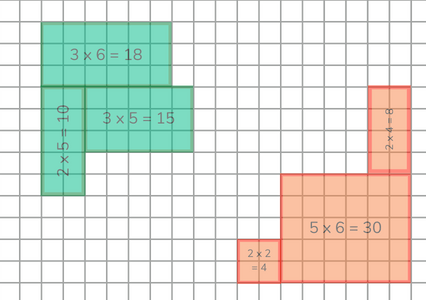
Make it easier:
- Use bigger-squared paper, or paper with fewer squares
Make it harder:
- Use smaller piece of graph paper, or paper with more squares
- Use dice with more than 6 sides, or ask the children to roll it more than once
5th Grade multiplication games
Game: Roll the result!
What you need: pen and paper or mini whiteboard, dice
How to play:
- In pairs, each draw a 3- by 2-digit numbers column multiplication but with empty boxes, as below
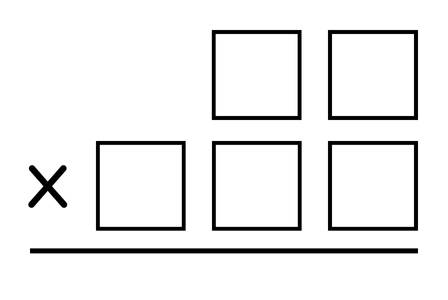
- Take it in turns to roll a die and choose in which place value of which number to place that digit in the multiplication
- Once all 5 boxes have been filled, complete the multiplication – the person with the biggest final value wins
- You could change this to make the winner the person with the smallest final value!
Make it easier:
- Change it to a 3- by 1-digit multiplication (or 2- by 1-digit)
Make it harder:
- Change it to a 4-by 2-digit multiplication
- Use a 9-sided die
Game: Product Power!
What you need: 2 mini whiteboards and pens
How to play:
- Two children stand at the front of the class back-to-back
- Child A can write any number under 100 with up to 2 decimal places; child B can write any power of 10 up to 10,000. Each child writes their number on a mini whiteboard and shows the class (without seeing each other’s)
- Choose a child to work out the product of the two numbers (e.g. child A writes 32.5, child B chooses 1,000, so the product is 32,500)
- The first child to work out the number on their partner’s whiteboard wins!
Make it easier:
- Child A can only choose a number under 10
- Child A can only choose a number with 1 decimal place (or none)
- Child B can only choose a power of 10 up to 1,000
- Ensure a set amount of thinking time before either child can call out an answer
Make it harder:
- Child A can choose a number up to 1,000
- Child A can choose a number with 3 decimal places
- Child B can choose a power of 10 up to 1,000,000
- Set a time limit – if nobody says an answer within 3 seconds, both children are out!
See below for further math games for your classroom:
- 25 Fun Math Games For Kids To Do At Home For Free!
- 10 Simple Place Value Games (lower & upper elementary) To Make Your Math Lessons Fun And Effective
- 18 Brilliant Mental Math Games To Build Number Fluency, Speed And Stamina In lower & upper elementary
Do you have students who need extra support in math?
Give your students more opportunities to consolidate learning and practice skills through personalized math tutoring with their own dedicated online math tutor.
Each student receives differentiated instruction designed to close their individual learning gaps, and scaffolded learning ensures every student learns at the right pace. Lessons are aligned with your state’s standards and assessments, plus you’ll receive regular reports every step of the way.
Personalized one-on-one math tutoring programs are available for:
– 2nd grade tutoring
– 3rd grade tutoring
– 4th grade tutoring
– 5th grade tutoring
– 6th grade tutoring
– 7th grade tutoring
– 8th grade tutoring
Why not learn more about how it works?
The content in this article was originally written by primary school teacher Sophie Bartlett and has since been revised and adapted for US schools by elementary math teacher Christi Kulesza.

